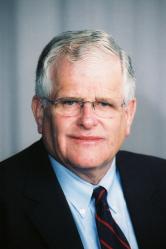On June 14, Roll Call reported that Senate Republicans had invoked the “Thurmond Rule” and would not allow votes for any more pending court of appeals nominees in the run up to the 2012 presidential election. Both parties have at least paid lip-service to the “rule” in some form, anticipating the possibility that come January, their presidential candidate will be nominating judges. (Why June 14 is discussed here. No blanket moratorium on district confirmations is probably because Senates controlled by both parties have approved district nominations well into the election years.)
Confirmations slowed in July and August of 2012, as they did in previous election years. Only one circuit nominee in the four previous election years got confirmed after June (viz., July 21, 2000). And this year, Republicans beat back a July 30 effort to allow a vote on an Oklahoma circuit nominee supported by the state’s two Republican senators. Except for 16 district confirmations in July and August 1996, there have been only a handful of district confirmations in those months in election years: four in 2000 and this year, and one each in the other two years.
Even though circuit confirmations are apparently over for 2012, President Obama’s circuit confirmation success rate so far stacks up fairly well compared to those of his immediate predecessors. His district numbers lag behind, but some late-year confirmations could improve his tally, as they did those of his immediate predecessors. Unlike under Clinton or Bush, district vacancies have increased rather than decreased under Obama, but that can be explained in part by the much greater number of district judges who have left active judicial service (creating vacancies) under Obama than under Clinton or Bush during the same time period.
Confirmations Slow Down in Presidential Election Years
As in previous presidential election years, the Senate will recess in early August for campaigning and conventions. Here are confirmation rates at the summer recess for Obama’s 2009-12 term and for his immediate predecessors’ two terms—for the election years and, for comparison, for the three-plus years leading up to the summer break. For example, in 1996, up to the August 2 break, the Senate confirmed 18 of President Clinton’s 39 district nominees—those carried over from 1995 and those submitted in 1996 (for a 46 percent rate). From Inauguration Day in January 1993 through August 2, 1996, the Senate confirmed 87 percent of his 195 district nominees.
|
District Confirmations at Summer Recess * |
|||
| Election Year Only | Term to Recess | Recess Date | |
| 1993-96 (Clinton) | 46% (18/39) | 87% (169/195) | Aug. 2 |
| 1996-2000 | 57% (27/47) | 82% (132/161) | Jul. 27 |
| 2001-04 (Bush) | 73% (24/33) | 93% (162/174) | Jul. 22 |
| 2005-08 | 33% (14/43) | 73% (83/114) | Aug. 1 |
| 2009-12 (Obama) | 52% (28/54) | 80% (125/156) | Aug. 3 |
| *In all tables, the base numbers are nominees, not nominations; one nominated in one Congress then renominated in next counts as a single nominee. The district figures exclude the term-limited territorial court judges. | |||
Obama’s district confirmation rate, 52 percent so far in 2012, is roughly in the middle of the four preceding election years. His 80 percent rate over the three-plus years of his presidency, however, surpasses only that of President Bush in his second term.
Obama’s circuit confirmation rate, 45 percent so far in 2012, is greater than either predecessor’s, and his 71 percent rate overall is only exceeded by the 77 percent rate in Clinton’s first term.
|
Court of Appeals Confirmations at Summer Recess |
|||
| Election Year Only | Term to Recess | Recess Date | |
| 1993-96 (Clinton) | 18% (2/11) | 77% (30/39) | Aug. 2 |
| 1996-2000 | 35% (8/23) | 63% (35/56) | Jul. 27 |
| 2001-04 (Bush) | 24% (5/21) | 67% (34/51) | Jul. 22 |
| 2005-08 | 27% (4/15) | 60% (26/43) | Aug. 1 |
| 2009-12 (Obama) | 45% (5/11) | 71% (30/42) | Aug. 3 |
Numerous commentators have noted that judicial vacancies under Obama are greater now than they were on Inauguration Day, unlike in 2004 and 1996, which they attribute to Obama’s fewer nominations as well as the pace of confirmations.
The number of circuit vacancies at the 2012 summer recess—14— is the same as in January 2009. Clinton and Bush experienced the same thing–from 17 to 16 for Clinton and 13 to 13 for Bush.
District vacancies in the same periods decreased from 90 to 42 under Clinton and from 27 to 15 under Bush, but increased from 41 to 61 under Obama. One little-noted reason for that, however, is that many more district judges left active service during Obama’s administration than they did during Clinton’s or Bush’s during the same period. Under Obama, 144 district judges have left active service, mainly by taking senior status, but also through death, court of appeals appointments, resignation and retirement (and one conviction on impeachment.) The 144 is 27 greater than the 117 who left active service under Clinton in the same time period and 31 greater than the 113 who left active service under Bush, although Congress created 15 additional vacancies in 2002 through new judgeship legislation.
Possible Overall Four-Year Record
Obama’s full term circuit confirmation rate and numbers, while not spectacular, hold up fairly well in comparison to his predecessors’ terms (especially the more analogous first terms), but, even with some unlikely late year district confirmations, his district confirmation numbers and rate will lag behind his predecessors’ first term tallies.
Here are his current numbers and the final four-year numbers for his predecessors:
| District* | Court of Appeals* | |
| 1993-96 | 87% (169/195) | 77% (30/39) |
| 1996-2000 | 84% (136/161) | 63% (35/56) |
| 2001-04 | 97% (168/174) | 67% (34/51) |
| 2005-08 | 82% (93/114) | 60% (26/43) |
|
2009-8/3/12 |
80% (125/156) | 71% (30/42) |
| *The base numbers, nominees (e.g., 195 and 39 in 1993-96), exclude the handfuls of nominees submitted after the presidential election year summer recesses, none of whom was confirmed. | ||
Obama’s circuit confirmations are on a par with the four previous terms as to numbers. His 30 confirmations match Clinton’s first-term record and are four below Bush’s first term. They are five less than in Clinton’s second and four more than in Bush’s. His circuit confirmation rate—71 percent—is second highest of the five years, slightly below Clinton’s first term 77 percent and slightly above Bush’s first term 67 percent.
These confirmations have altered the balance in the courts of appeals. Eighty-one (49 percent) of the 165 circuit judges in active status on August 2 are Democratic appointees; when Obama took office, with the same number of active judges, the 65 Democratic appointees were 39 percent of the total. In January 2009, one of the 13 courts of appeals had a majority of Democratic appointees; today, six do, although some of the majorities are slim, and the balance of Republican and Democratic appointees is a weak predictor at best of decisional tendencies.
Obama’s district confirmations are a different story. As it stands now, Obama’s 125 confirmations, an 80 percent rate, are well below either of the final figures for the first terms of Clinton (87 percent) or Bush (97 percent), and slightly below those of their second terms.
Autumn confirmations, though, could change the final picture, as they have in previous election years. There will almost surely be no circuit confirmations for the rest of 2012 (despite some reports of possible post-election votes), just as there was none in the four previous years.
However, in all but one of those years, Clinton and Bush benefitted from post-recess district confirmations, as seen below. Most dramatically, at the August 2008 recess, the Democratically controlled Senate had confirmed 73 percent of Bush’s district nominees. Ten late-September confirmations—with Bush a lame duck and an Obama victory in November a distinct possibility—boosted the rate to 82 percent. (Of those ten confirmed nominees, eight had been waiting less than 100 days since their July 2008 nominations.)
| District Confirmations | |||
| At Recess’ Start | After the Recess | Final Rate* | |
| 1993-96 | 87% (169/195) | 0 | 87% (169/195) |
| 1996-2000 | 82% (13/161) | 4 | 84% (136/161) |
| 2001-04 | 93% (162/174) | 6 | 97% (168/174) |
| 2005-08 | 73% (83/114) | 10 | 82% (93/114) |
|
2009-8/3/12 |
80% (125/156) | ___ | __% (___/156) |
| *Excluding post-recess nominees | |||
Post-convention district confirmations in 2012 could also boost Obama’s final tallies. If the Senate, as in 2008, were to confirm ten more Obama district nominees—a huge “if”—his overall rate for the four years would rise to 87 percent. That’s the same as Clinton’s first term, although well below the 97 percent in Bush’s first term. Five autumn confirmations would raise the rate to 83 percent.
The nominees are certainly in place—24 currently pending. Come late September 2012, for comparison to the 2008 situation, three district nominees will have been pending for over 300 days, seven more for at least 200 days, 11 more for over 100 days, and three more at 94 days.
Despite the higher confirmation rate that ten late-year confirmations would produce, the number of first term Obama district judge confirmations would remain below those in both of his predecessors’ first terms, and below Clinton’s second term. They would outpace Bush’s second term. The number of judges confirmed, though, is partly a function of the number of nominees. The comparatively low number of Obama, and Bush second term, nominees, helps explain the comparatively low number of appointees.
Confirmation rates and numbers of confirmations are only one comparative measure of presidential-Senate judicial confirmation politics. Democrats claim, for example, that unlike Bush, Obama has nominated mainly middle-of-the road candidates for circuit judgeships, justifying more confirmations than the Senate has allowed, and that Bush’s comparatively low circuit confirmation record reflects in part a greater number of ideologically or otherwise unacceptable nominees. Republicans, obviously, express a different view, charging Democratic senators with initiating filibusters of highly qualified Bush nominees. But those and similar claims need enough time to permit accumulation and assessment of comparative voting records and are beyond the scope of this modest inquiry.
This piece was updated on August 5, 2012 to include the Senate’s unscheduled confirmation vote held on August 2.
The Brookings Institution is committed to quality, independence, and impact.
We are supported by a diverse array of funders. In line with our values and policies, each Brookings publication represents the sole views of its author(s).



